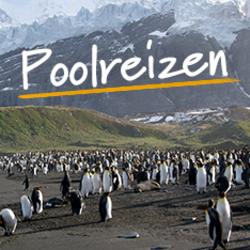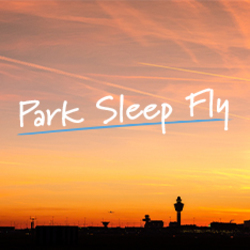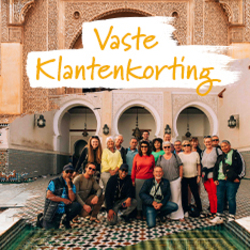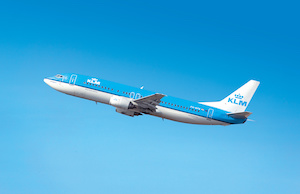Profiteer t/m 25 oktober
BekijkFood
- — Cruise Havana in a classic car — Join Cuban cowboys for an immersive afternoon at a working farm — Explore isolated Baracoa on Cuba's eastern tip — Get moving on a drumming workshop led by local musicians — Shake things up with a cocktail-making class — Hike to Castro and Guevara's hideout in the Sierra Maestra
Activities
- Culture
- Cultural Wonders
- Natural Wonders
-
1
Start Havana
Welcome to Havana, the lively capital of Cuba. Founded by the Spanish in the 16th century, it is now a soulful mix of colonial architecture, street troubadours and classic cars. We check into our first casas particulares of the trip; today is all about settling in and unwinding after your flight. The welcome briefing typically takes place tomorrow. Accommodation: Casas particulares
-
2
Visit Old Havana; drive to Santa Clara via the Che Guevara Mausoleum
This morning, we have a tour of Old Havana, stopping at El Capitolio, which bears a resemblance to the Capitol building in Washington DC, and at Revolution Square. We also visit KCHO studio, which showcases local art and the relationship between Cuban art and the government. We then set off for Santa Clara, stopping on the way for lunch at our first paladar (family-run restaurants that form the soul of Cuban dining). Arrive into Santa Clara this afternoon, where the last battle of the Cuban Revolution took place. In December 1958, Che Guevara and his troops ambushed a train carrying arms to Santiago de Cuba – the major turning point in the revolution. We visit the mausoleum of Che Guevara and his comrades who died in Bolivia. The attached museum has many of his belongings – a fascinating insight into a 20th century icon. After, we check into our casas particulares before heading to a paladar for dinner. We also visit El Mejunje, the first openly LGBTQ+ bar in Cuba, founded in 1990. Today’s driving time is approximately four hours. Accommodation: Casas particulares
-
3
To the colourful city of Bayamo
Today is a long driving day as we head to Bayamo in the south of the island. We pass through agricultural towns and sugarcane plantations as we go, learning about the importance of sugar in Cuba’s history. We stop in Camaguëy, the fourth-largest city in the country, to break the journey and have lunch in a paladar. On arrival in Bayamo, we enjoy an orientation tour before checking into our guesthouses for the night and having dinner at a paladar. Today’s driving time is approximately seven hours. Accommodation: Casas particulares
-
4
To Baracoa; stop at Tortuguilla Beach
After breakfast, we leave Bayamo and drive to Tortuguilla Beach, where we stop for a light lunch and a chance to swim in the Caribbean waters. We then continue to Baracoa, a quaint town surrounded by lush, tropical mountains and gold-sand beaches. Founded in 1512, Baracoa was the first Spanish settlement in Cuba and served as the capital for three years. Its location on the easternmost tip of the island left it open to attacks from pirates, smugglers and the English, so three forts were constructed in the 18th century for protection. The city has only been accessible by road since the 1960s and this has left it largely off the tourist route. However, the area is renowned for cocoa growing and chocolate production, while the Malecon on the northeast side of town is considered the first ocean drive in the Caribbean. There is also a strong indigenous influence here and El Yunque (an anvil-shaped mountain mentioned by Christopher Columbus in his diaries) used to be home to various indigenous communities. We arrive in the late afternoon and enjoy a walking tour with a local guide before checking into our casas particulares. This evening, we head to a paladar for a hands-on cookery class and dinner, uncovering the secrets of traditional Baracoan cuisine. Due to its isolation, Baracoa has developed a unique gastronomy that has been heavily influenced by indigenous and Haitian cooking. Today’s driving time is approximately five hours. Accommodation: Casas particulares
-
5
Visit a conservation project and lunch on the beach
This morning, we visit a family who are dedicating their lives to the conservation of the endangered polymita snail, whose beautiful red, yellow, white and black shells have been used in crafts and jewellery. The family now breeds them to protect their numbers and teaches others about this unique species. Afterwards, we enjoy a fish lunch on the beach with a local family – a great chance to learn more about their lives in this part of Cuba. This afternoon, we return to Baracoa and enjoy a short walking tour, where there’s time to visit locally owned craft shops and cafes. We also stop to listen to live Cuban music in a casa de la trova, a musical hotspot where troubadours play traditional songs. Accommodation: Casas particulares
-
6
To Santiago de Cuba
Leave Baracoa after breakfast and travel towards Santiago de Cuba, known as the City of Heroes for the important role it played in the independence and revolutionary struggles. Santiago rivals Havana for literature, music and politics, and is rich in traditions, folklore and legends. Along the way, we stop in the busy city of Guantanamo to visit a dance school, where we learn more about the cultural heritage of Cuba, digging into the danzón, son and salsa styles. We also stop to talk to a priest of the Vodù religion, before enjoying a Haitian-influenced paladar lunch. On arrival in Santiago, we stroll through the city, where the local son music provides a lively soundtrack to our adventures, and enjoy dinner at another paladar. Today’s driving time is approximately four hours. Accommodation: Casas particulares
-
7
Explore Santiago de Cuba and dance at the Museo del Carnaval
Explore Santiago this morning, visiting the Santa Ifigenia Cemetery, where Fidel Castro is buried, Revolution Square, El Morro Castle and Moncada Barracks, where the opening shots of the Revolution were fired on 26 July 1953. After, we enjoy lunch in a paladar. The afternoon is dedicated to music and dance – Santiago is not only considered the cradle of the Revolution but, as the home of the Afro-Cuban genre son cubano, it is also the most important city musically. We enjoy an afternoon guided tour and performance at the Museo del Carnaval, which showcases songs and dances brought to Cuba by enslaved people from Africa. We finish the afternoon with a salsa lesson, which took its modern form in Cuba at the turn of the 20th century. Later in the evening, we visit Casa de la Trova. While many towns have a casa de la trova, this particular spot is a musical institution and offers a chance for us to enjoy traditional Cuban music played by experienced hands and rising stars. Former performers here include members of legendary Cuban band Buena Vista Social Club. Accommodation: Casas particulares
-
8
To the Sierra Maestra
Leaving the city, we drive towards the green mountains of the Sierra Maestra, stopping to visit El Cobre, the most sacred pilgrimage site in Cuba. Upon arrival, visit the Church of La Virgen de la Caridad, Cuba’s patron saint, and learn how African and Catholic religions have intertwined in Cuba to create Santería. We then climb a short distance to see the Monument to the Runaway Slave, an iron-and-bronze hillside sculpture dedicated to one of the earliest and most important revolts by enslaved people, which took place in 1731. After, we continue into the Sierra Maestra and stop for a picnic lunch along the way. We reach our destination, Villa Santo Domingo, in the early afternoon. This evening, we stay in casas particulares in a humble mountain village. Accommodation is simple but the welcome is warm. This evening, we head to Junco’s Farm in the village, where Junco and his family welcome us for a traditional Cuban country dinner. The food is served with plenty of stories about Junco’s life and the history of the region. After dinner, we join the family for rum and a game of Cuban dominoes – a classic Cuban experience and an unforgettable bonding moment. Today’s driving time is approximately three hours. Accommodation: Casas particulares
-
9
Walk to Castro's revolution headquarters; to Camaguëy
Spend this morning in the Gran Parque Nacional Sierra Maestra, a spectacular national park within the highest mountain range in Cuba. This region is well known as Fidel Castro’s base of operations during the Cuban Revolution. High in the sierra is Comandancia de la Plata, the secret hideout of Castro and Che Guevara, which was used for planning the revolution in the 1950s, and as the base of Radio Rebelde, which provided information for the revolutionaries. Accompanied by a local guide, we hike to the base and may have time to paddle in the Yara River. We enjoy lunch in a paladar, and then continue to Camaguëy where we spend the night. After almost continuous attacks from pirates, the original city (founded on the northern coast as Santa Maria del Puerto del Principe around 1515) was moved inland in 1528. The new city was built with a confusing layout of winding alleys that made it easier to defend. After checking into our casas particulares, we enjoy dinner together at a paladar. Today’s driving time is approximately three hours. Accommodation: Casas particulares
-
10
Camaguëy sightseeing by bici-taxi; walking tour of Trinidad
Explore this historic city by bici-taxi this morning, each peddled by a local. On our three-wheeled vehicles, we travel through the winding streets of Camaguëy and pass by the Church of Soledad, the historic centre and the old convent of Ursuline Mothers. Depending on availability, we visit a local artist who is a sculptor, painter, illustrator, engraver and ceramicist. We visit her studio workshop, where she showcases her work and speaks about how her life in Cuba, and in Camaguëy in particular, influences her creations. Alternatively, we may visit an initiative that focuses on dance and helps young people discover performing arts in Cuba. We then continue to Trinidad, a World Heritage site since 1988 and perhaps the best-preserved colonial town on the island, where we enjoy a walking tour. Exploring Trinidad is like stepping back in time; the cobbled streets and horse-drawn transportation whisking you back to the Colonial era. There are many interesting museums in colonial buildings to visit during the day, but Trinidad really comes alive as the sun sets, when the bars and paladares kick into action. This evening, we take part in a cocktail-making class, visiting a paladar to learn how to make the perfect mojito from a local bartender. Today’s driving time is approximately four hours. Accommodation: Casas particulares
-
11
Trinidad and Valle de los Ingenios
Take a short walking tour of Trinidad this morning before heading to the nearby Valle de los Ingenios, one of the largest producers of sugarcane in the 18th and 19th centuries. Our first visit is to the Santander family, whose pottery-making heritage stretches back generations. We see their workshop and even have the chance to throw a pot ourselves. It’s then on to Manaca Iznaga, a one-time sugarcane estate, where we learn about the local sugar-growing history, a hugely important industry for Cuba during the 18th and 19th centuries, before visiting the plaza where there is an artisan market showcasing locally made crafts, souvenirs as well as fruit and honey. Finally, we visit a local project that teaches young people about textile making, art and dance. Returning, we take a short drive to Playa Ancón where we have a fish lunch on the beach and enjoy the beautiful Caribbean Sea. In the afternoon, we head back to Trinidad. After freshening up, we join a local drumming group who take us on an evocative and joyful journey from Africa to modern Cuba through the pulsating Afro-Cuban rhythms of a drumming workshop. After, we enjoy dinner in a paladar. Accommodation: Casas particulares
-
12
Cowboy day at Finca La Lima; to Cienfuegos
Set off for Finca La Lima after breakfast for a Cuban cowboy day on a working farm. We join farmers for a walk to the creek for a swim, use a press to squeeze our own sugarcane juice, and milk the cows before lunch at the hacienda. We then carry on to Cienfuegos, the Pearl of the South, where our local guide gives us a tour of this colonial city, first settled in the 19th century by French immigrants. We visit some of the most important plazas, including Plaza José Martí, and our tour guide tells us about Beny Moré, a Cuban musical legend who often sang of his adoration for Cienfuegos. We then check into our casas particulares, followed by dinner in a paladar. Accommodation: Casas particulares
-
13
Visit the Bay of Pigs; to Havana
Today we visit the Bay of Pigs, site of the attempted US invasion in 1961, and drive through the Zapata Peninsula back to Havana. We visit the museum at Playa Giron, which focuses on the invasion, and stop for lunch and to swim at Punta Perdiz, a promontory jutting into the Bay of Pigs and a great snorkelling spot. We are joined by a marine expert who chats to the group about sea life and the conservation of local coral. If time permits, we make a brief stop in the village of Palpite to visit a local who usually has many zunzuncitos (bee hummingbirds) living in his garden. After arriving back to energetic Havana, we have a walking tour of Old Havana – a living museum, with magnificent monuments, cathedrals and palaces. Today’s driving time is approximately four hours. Accommodation: Casas particulares
-
14
Classic car tour in the capital of Cuba; screen-printing workshop
This morning, we have more time to explore Old Havana with our guide. We start with a classic car tour, cruising through the streets of Old Havana and along the Malecón towards the more modern part of town. As we travel in our vintage cars, we stop along the way to hear stories and explanations of Havana’s highlights and learn how these cars became an iconic part of Havana. We then enjoy a walking tour of Old Havana, visiting both historic points of interest and meeting its current residents. It is the finest surviving Spanish colonial complex in the Americas, preserved by a combination of minimal war damage, post-revolution restoration and the millions of dollars invested since it was declared a World Heritage site in 1982. We spend the afternoon at a screen-printing workshop with some of the finest graphic designers in Havana, before heading down to the Malecón for rum cocktails, spontaneous music and conversation on the iconic seafront boulevard. Tonight, we enjoy our final dinner in a paladar. Accommodation: Casas particulares
-
15
End Havana
The adventure ends today. Bid a fond farewell to Cuba and catch a free transfer to Havana Airport for your return flight home. See the Joining Instructions for more information on booking your transport to the airport.



































